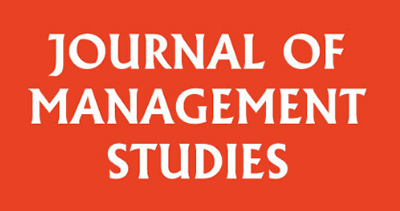
The ability of organizations to effectively respond to crises is predicated on preparation and planning that draws on past experiences and blueprints for how to address crises. However, sometimes organizations experience crises that are unlike anything they have seen before. Such was the case with the SARS-CoV-2 pandemic and the problems that it caused (e.g., lockdowns, supply chain breakdowns, employee hospitalizations and deaths, erosion of trust and respect for institutions). Importantly, given climate change and world interconnectedness, we expect to see more of these kinds of crises.
In our research, published in the Journal of Management Studies, we set out to answer two questions: How should we characterize these crises? And what kinds of decision makers are better suited to address them?
Unfamiliar Crises are SIGEL
We describe these types of crises as SIGEL: surprising (i.e.,they are unfamiliar and external to the organization), intractable (i.e., they are unmanageable, changing, and difficult to control or tame), global (i.e., they are present worldwide and overly complex, leaving no place to run), existential (i.e., they are threatening to stakeholders’ life or limb), and lingering (i.e., they stick around, persist, and are permanent).
Because of these attributes, organizations cannot prevent or prepare for these in advance, avoid them, devise responses that remain effective over time, or return to normal. Thus, when SIGEL crises hit, organizations cannot rely on playbooks, historical data, or experience on how to tackle them. How then can organizations handle such crises? We suggest that one answer to this question lies in the temporal mindsets of their decision makers.
The Temporal Mindsets of Decision Makers
Temporal mindsets are the lenses through which decision makers interpret time guiding their information search and attention, resource allocation, and/or the way they develop their cognitive frames. Temporal mindsets reflect four innate temporal dispositions of the decision maker: (1) time urgency – or the natural tendency and pressure of the decision maker to act quickly, (2) past focus – or the natural tendency of the decision maker to pay attention to and think about the past, (3) present focus – or the natural tendency of the decision maker to pay attention to and think about the present, and (4) future focus – or the natural tendency of the decision maker to pay attention to and think about the future.
We studied the effect of decision makers’ temporal mindsets on their firms’ effective alignment with COVID-19 – a SIGEL crisis – using a sample of 268 U.S. and U.K. entrepreneurs running new ventures 10 years old or younger over two time periods. This is what we found:
Non-Time Urgent Decision Makers Better Tackle SIGEL Crises
We find that being prone to act quickly (i.e., being a time urgent decision maker) leads to less effective firm alignment with a SIGEL crisis. As a result, we offer two suggestions for decision makers with time urgent mindsets facing SIGEL crises. First, they should avoid following their natural urge to react prematurely. Instead, they should activate their effort-based and slow thinking system while ignoring their automatic-based and fast thinking one, and then act. Second, they should surround themselves by others who are low in time urgency and listen to them.
The Best Temporal Foci to Tackle SIGEL Crises
Since decision makers can “time travel” in their thoughts to three different time periods (i.e., past, present and future) or none at all, we examined the effect of each one of these three temporal foci alone and in combination.
When it comes to temporal foci acting alone, we find that decision makers who pay attention to the present – that is, those who search real-time information, engage in novel actions and develop malleable cognitive frames – are better at aligning their firms with SIGEL crises. Similarly, we find that decision makers who pay attention to the future – that is, those who allocate resources to potential futures ahead of time and handle negative external cues well – are better at aligning their firms with SIGEL crises.
When examining how these temporal foci work in combination, we find that decision makers with a forward-looking foci mindset (i.e., those with high future focus, low past focus, and low present focus) or a trifurcated one (i.e., those with high past, high present, and high future foci), with the former being the best, attain the most effective firm alignment with SIGEL crises.
We offer two recommendations to practicing decision makers. First, non-future focused decision makers should be aware of the importance of thinking about their firms’ horizon despite the need to respond to a current SIGEL crisis as this can help them build resilient firms. Second, non-present focused decision makers should recognize the importance of surveilling up-to-date information and force themselves to seek this information when SIGEL crises strike. Only then can decision makers recognize the ephemeral and shifting nature of problems created by SIGEL crises and the need for flexibility in their cognitive frameworks to interpret them.
Avoiding Thinking about Time is Bad in SIGEL Crises
A key result is that decision makers with a void temporal foci mindset (i.e., those with low past, low present, low future) drive the least effective firm alignment. Under SIGEL crises, practicing managers should be aware of the importance of thinking about time frames, especially the future, and of the harm associated with ignoring them.

0 Comments